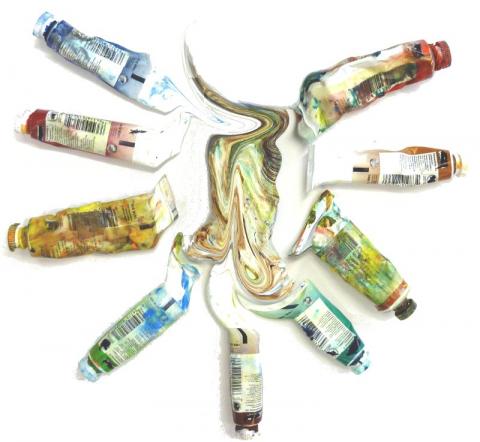What’s Next for Artist Paint Tubes?
In 1841, the American artist John Goffe Rand invented collapsible metal tubes for preserving oil paints. These tubes made it possible to transport paint outdoors, and according to Renoir, were essential in the development of impressionism. Before metal tubes, paints were stored in animal bladders or wrapped in tin foil. A bone or ivory pin would puncture the bladder so that paint could be squeezed out. Pure tin tubes were used in the beginning because tin didn’t stain or affect the tube contents. Lead tubes were also used. In 1859, Alexandre Lefranc invented the screw cap, ensuring that the tube could be opened and closed multiple times.
Currently, aluminum has replaced tin for use in paint tubes because it is more flexible for squeezing out the paint, is less expensive, and stronger. Likewise, lead has been mostly replaced, although a few companies still retain its use for historical and marketing purposes. The current resurgence of interest in traditional painting methods and materials may contribute to the use of lead in various products, however, the use of lead seems doomed due to global legislation.
In the world of commercial packaging, innovations are a constant. Think of square wine boxes, juices in squeeze-bags, and toothpaste in syringes! Perhaps it is only a matter of time before someone will discover a “better” artist paint package. Maybe the new package will be disposable, biodegradable, less-toxic, and made from renewable resources. The only problem will be convincing artists that the new containers are a better choice.




